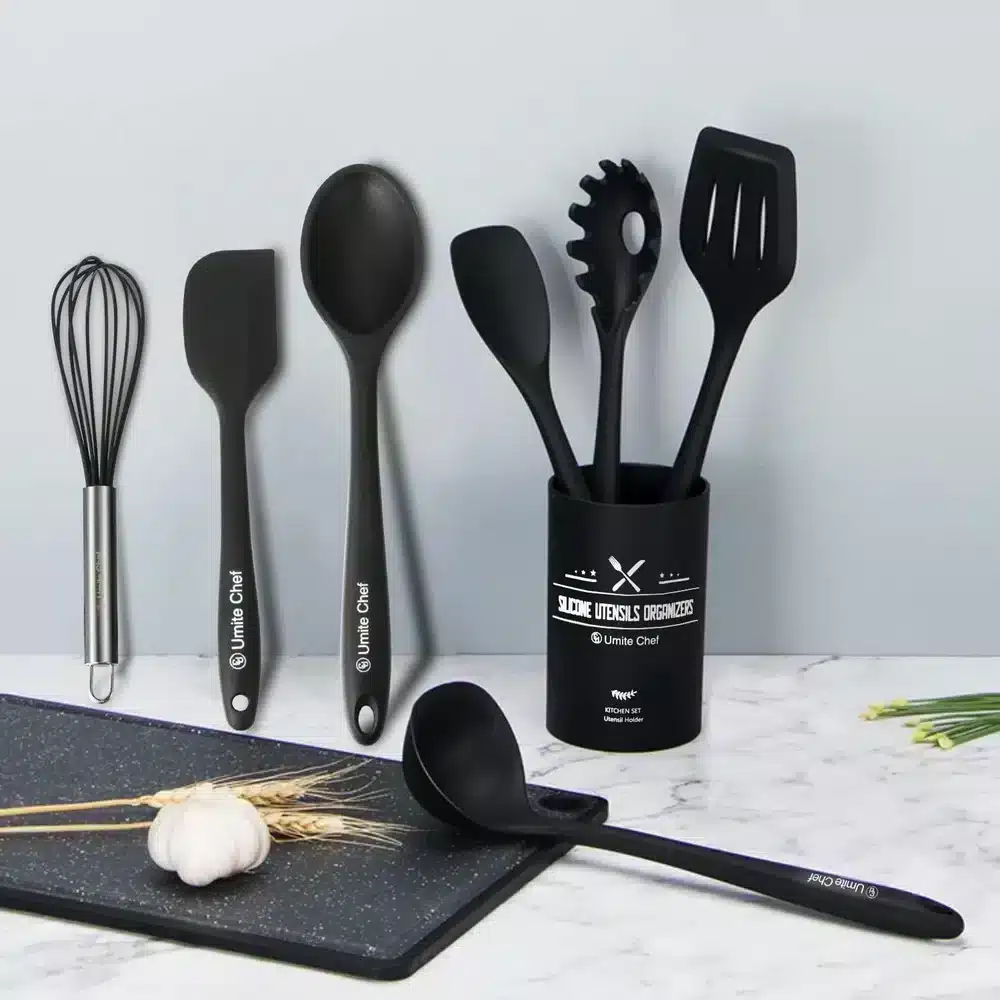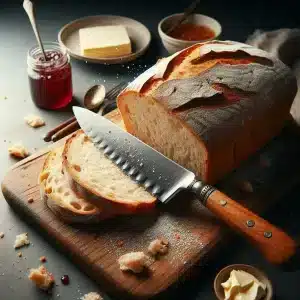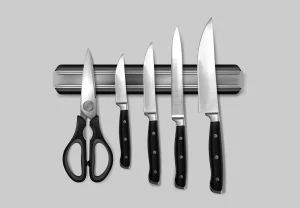If you want to change your kitchen utensils, it is a good idea to know which is the best material.
Not only for an aesthetic sense, but also for the utility at the moment of cooking. Each material has its advantages and disadvantages.
Therefore, we have prepared a guide for you to know which cookware you need.
Wooden utensils kitchen
Wooden utensils have been a mainstay in kitchens for centuries, valued for their durability, versatility, and aesthetic appeal. A key advantage of wooden utensils is their gentleness on cookware. They are particularly suitable for use with non-stick surfaces, as they do not scratch or damage the coating.
However, proper maintenance is crucial. Wooden utensils should be hand-washed with mild soap and dried immediately to prevent warping and cracking.
Another benefit is their insulating properties. Wooden spoons and spatulas do not conduct heat, meaning they stay cool to the touch even when left in a hot pot. This feature enhances safety in the kitchen, reducing the risk of burns.
From an environmental standpoint, wooden utensils are a sustainable choice when sourced from responsibly managed forests. They are biodegradable and have a lower carbon footprint compared to plastic or metal alternatives.
Bamboo utensils kitchen
Bamboo utensils are becoming increasingly popular due to their eco-friendliness and durability. Made from one of the fastest-growing plants on the planet, bamboo utensils are a sustainable choice that appeals to environmentally conscious consumers.
One of the most notable benefits of bamboo is its inherent antibacterial and antifungal properties. This makes bamboo utensils more hygienic compared to some other materials. They naturally resist water absorption, helping to prevent the growth of bacteria and mold. This feature also makes them low-maintenance, as they are easy to clean and less prone to cracking and warping than traditional wood.
Bamboo utensils are lightweight yet strong, a combination that makes them easy to handle and durable. Like wooden utensils, they are non-scratch, which makes them ideal for use with non-stick cookware, preserving the lifespan of your pots and pans.
In terms of aesthetics, bamboo utensils add a modern, minimalist touch to the kitchen. Their sleek and simple design can complement a range of kitchen styles, from rustic to contemporary.
However, it’s important to note that while bamboo is more water-resistant than traditional wood, these utensils should still not be left to soak in water and should be dried promptly after washing.
Nylon Utensils in the Kitchen
Nylon utensils are a modern kitchen staple known for their durability. Made from a type of plastic that can withstand high temperatures, nylon utensils are particularly well-suited for use in cooking and baking.
Nylon utensils can typically withstand temperatures up to 400 degrees Fahrenheit, making them safe for use in hot pots and pans. This feature significantly reduces the risk of melting or warping during cooking.
Another benefit of nylon utensils is their non-stick compatibility. Their smooth, non-abrasive surface makes them ideal for use with non-stick cookware, as they won’t scratch or damage the delicate coating. This quality helps prolong the life of your non-stick pots and pans.
Nylon utensils are also easy to clean and maintain. Most are dishwasher safe, offering a convenient and hygienic option for busy kitchens. They resist stains and odors, which helps them maintain their appearance and functionality over time.
In terms of affordability, nylon utensils are generally more cost-effective than their metal or wooden counterparts, making them a popular choice for those seeking quality kitchen tools on a budget.
However, it’s important to note that while nylon is durable, it is not as heat-resistant as silicone or as eco-friendly as wood or bamboo. Over time, nylon can start to show signs of wear, especially when frequently exposed to high temperatures or harsh cleaning agents.
Stainless steel kitchen utensils
Stainless steel kitchen utensils are a cornerstone in modern culinary settings, renowned for their strength, durability, and sleek appearance. This material is a popular choice among both professional chefs and home cooks due to its numerous advantages.
One of the standout features of stainless steel is its exceptional durability. These utensils are highly resistant to rust, corrosion, and stains, ensuring they last for years. This resilience makes them ideal for a wide range of cooking tasks, from stirring and flipping to serving.
Another significant benefit is their high heat tolerance. Stainless steel can withstand very high temperatures without melting or warping, making these utensils safe for use in hot pots, pans, and ovens. This property ensures they are a reliable tool for various cooking methods, from sautéing to grilling.
Stainless steel utensils are also appreciated for their hygienic qualities. The non-porous nature of stainless steel means it does not harbor bacteria or odors, making it an extremely hygienic option for food preparation. Plus, they are usually dishwasher safe, which further eases cleaning and maintenance.
From an aesthetic perspective, stainless steel utensils add a touch of elegance to any kitchen. Their polished, shiny appearance brings a professional and sophisticated feel to the cooking environment.
However, it’s important to note that while stainless steel is durable and heat-resistant, it can be heavier and more expensive than other materials like silicone or nylon. Also, it may not be as gentle on non-stick surfaces and could potentially scratch delicate coatings if used carelessly.
Silicone and wood utensils kitchen
Combining silicone and wood in kitchen utensils creates a harmonious blend of functionality and elegance. This duo capitalizes on the strengths of both materials, offering a versatile and practical solution for everyday cooking.
Wooden handles on silicone utensils add an ergonomic and aesthetic touch. Wood provides a comfortable, non-slip grip, reducing hand fatigue during prolonged use. It also adds a natural, warm element to the kitchen’s décor.
However, it’s important to consider the maintenance needs of silicone and wood. While silicone parts are often dishwasher safe and easy to clean, the wooden handles require more care. They should be hand-washed and dried thoroughly to maintain their integrity and appearance.
Conclusion
Each material has its pros and cons. We prefer silicone and stainless steel cookware for their safety, durability and utility.





